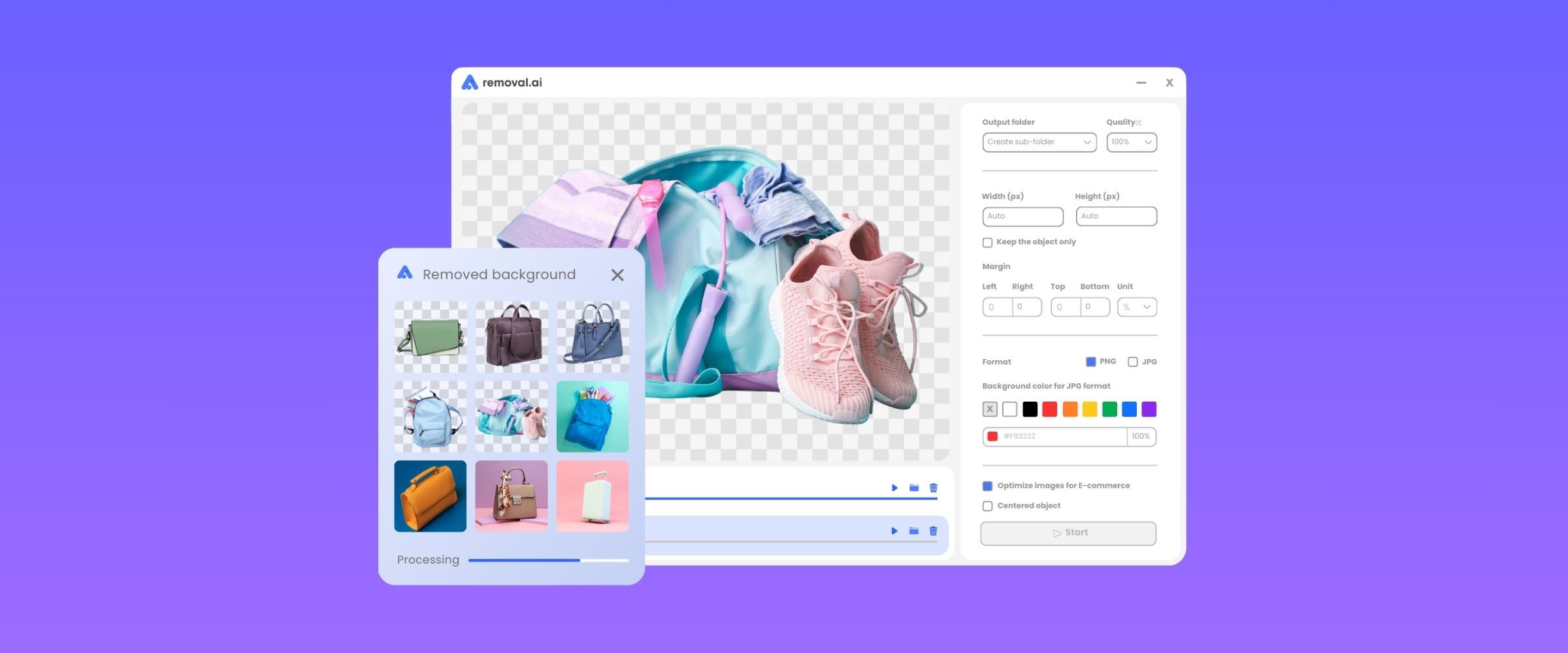
10 Examples of How Artificial Intelligence Is Changing the Way We Market
How does AI greatly impact the way we market in the digital space?
It is fascinating that throughout history, marketing techniques have continually evolved simultaneously with the technology mankind yields. And with the integration of AI in marketing, we are unlocking a whole plethora of possibilities that are leading to an increase in marketing effectiveness and efficiency.
Today, AI technology offers a whole lot of different functions and services that not only aid how we market but also bring about new and exciting experiences to consumers. AI is changing the way we market and provides us with tools and solutions that help establish our brands better across various marketing channels.

Image from Pexels
The History of AI in Marketing
Artificial intelligence can be dated back as early as the 1950s, yet its usage for marketing has only pioneered in the late 90s and has drastically emerged in the past decade. We can date back the earliest application of AI in marketing to 1998 when Amazon used collaborative filtering in its operations.
This collaborative filtering, a machine learning technique, enabled them to recommend products to customers related to their purchase based on other customers’ purchase histories and patterns. Today, we still see such usage not just on online selling platforms but on social media. If you’re a user of Facebook, you might most likely find yourself suggesting “people you may know” based on your Facebook friends’ friends (mutual friends). This type of AI technology has undeniably helped us connect to our circle more easily and, with satisfaction, get us into using Facebook continually.
In the early to mid-2010s, AI in marketing started to revolutionize by opening Artificial Intelligence’s use cases. We can see Yahoo in 2013 starting to use Artificial intelligence that uses Natural language processing for a faster generation of content that adjusts depending on the audience’s preferences. 2014 saw a drastic industry interest in programmatic advertising, which makes advertising targets more specific and fits leads and customers at just the right time. In 2016, Google presented one of its AI tools, Rankbrain, which analyzes user queries and gives relevant search results according to its interpreted user’s intent behind the analyzed search text. And in 2016 AI listening and response, such as virtual assistants and chatbots, entered the function arsenal of AI in Marketing.
At present, there are countless use cases for AI in marketing, and yet so many are still being developed and released. Taking account how rapid artificial intelligence develops, we can confidently say that the way we market will continuously change as time goes by.

Image from Vecteezy
The Growth of AI and Its Impact in Marketing
The adoption of AI in marketing significantly impacts both consumers and businesses. In fact, according to the statistical data from gradviewresearch.com, the compound annual growth rate or CAGR of the AI market is projected to reach up to 38.1% from the year 2022 to 2030 – following the increase of AI adoption in enterprises by 270% over the past four years from 2019. This proves that AI is not just a trend in the industry but a substantial addition to organizations’ success.
In the marketing industry, the integration and use of AI also drive impressive results. Based on a survey by Statista among marketers globally, 41 of the responders found an increase in their revenue by using AI in their campaigns. It was also found that AI positively affected Email Marketing campaigns, which resulted in an over 40% increase in revenue and a 13.44% improvement in click-through rates. Truly, AI has improved the effectiveness of marketing campaigns.
We can even see that chatbots, a revolutionary part of artificial intelligence, will contribute to significant cost reduction for businesses in the near future years. According to Juniper research, using chatbots will cut 2.5 billion customer service hours for companies across several industries. And this can be estimated to be around $11 billion by 2023.
Furthermore, consumers’ perception of artificial intelligence and Cx preferences support these increases in revenue in relation to improvements to businesses by AI in marketing. According to Instapage, 78% of consumers on the internet feel their purchase intent to increase to brands sending them personally relevant content, while 79% of them feel more inclined to engage in a personalized offer based on their past transactions with the brand.
And personalization to content and purchase recommendations brought by AI are not the only ones that receive positive customer feedback. They even perceived chatbots as a customer-satisfying tool due to their capability to respond immediately to their concerns all day. According to research by Drift, 64% of customers applauded chatbots being available 24/7 as the best function it offers.
Now that we have seen how the emergence of artificial intelligence affects how we market and its benefits let’s look at some AI tools and their functions for Marketing.
Check out: 20 Digital Marketing Tools for Your Business
10 Examples of AI Solutions in Marketing
1. Customer Service
One of the reasons businesses do marketing is to retain their customers and earn their loyalty. And that is achieved through high-quality customer service. And high-quality service may mean that your customers are valued, and their preferences are taken care of. Enter hyper-personalization.
Hyper personalization is one of the functions brought by artificial intelligence, whereby the preferences of each customer, be it a business or individual, are processed by artificial intelligence to be used for recommendations to such customers. These preferences are processed from different data inputs, such as customer demographics, purchase history, search history, customer and shop locations, corresponding environmental and socio-economic conditions, and even other customers’ data that may be relevant to a specific customer’s preference.

An example of a good AI tool for customer service is Morphl.io, which Algolia now owns. It is a software-as-a-service that gives such hyper-personalization to websites they integrate into. But of course, customer service does not limit only to hyper-personalization. It is facing and providing solutions to customer complaints and quickly answering customer queries.
2. Data Analysis
To keep up with the ever-changing customer needs, businesses must innovate their products continuously. They must strive to catch their customers’ tastes as time goes on continually. Of course, innovation needs a lot of consideration and brainstorming. Investment in a poorly planned product creation that your customers will reject, if not be displeased with, will lead to a disaster.
Artificial intelligence, with its advancement in deep learning, and natural language processing, can gather tons of data from different sources, just like hyper-personalization, and analyze them to come up with meaningful data. This data can be used as a basis for what your target market needs or wants, so you can innovate a product that fits their tastes.
One fun testament to this is how Unilever created a brand new product with the help of Popular Chips, an AI influencer marketing platform. Their AI detected 50 songs that contained the phrases”Ice cream for breakfast,” discovering a link between breakfast and ice cream, and became the basis for creating a range of cereal-flavored ice creams.
3. Chatbots
One of AI’s greatest breakthroughs in marketing is using chatbots.
Chatbots are a form of a program with the use of AI technology capable of responding to customers through chats without the intervention of humans. Their level of intelligence can range from being able to answer a predetermined set of questions to ones that use natural language processing and data analysis to “understand” a customer’s concern.
Chatbots, similar to smart assistants, definitely help both businesses and human employees alike. With simpler and frequent concerns being solved with chatbots, human customer support providers can spare their time solving repetitive yet simple concerns of clients. Concerns with more complexities and need more attention are filtered out so customer support can focus more of their time on them.
Businesses and sites can also make chatbots respond to their clients and customers 24/7 since they are made of computers and need less to no rest. It thus saves up business costs for customer support, as the need to hire more customer support agents to cover up all-time support service is lessened.

TIDIO, a customer service platform, is one of the chatbot providers to date. It responds to chats and follow-ups to your customers when they let items in the cart stay for a certain time, offers discounts on idling customers, and even chat suggestions that fit customers’ preferences.
4. Graphic Design
Graphics and pictures are essential elements of marketing your products and services. People are much assured of the quality of the products they buy. Pictures of your products help build up such assurance. Infographics appeal more to readers than plain text, and a good color combination and font choice must catch your audience’s attention. Effective logo designs help market your brand in peoples’ minds.
With its advancement, artificial intelligence can help build and edit your graphic design materials. Some AI tools combine machine and deep learning to learn from their big data inputs to learn how visual contents are appropriately made. They use natural language processing to “understand” the creators’ intent and taste in making graphic content. They also use computer vision to identify relevant content and ensure quality editing.

Brandmark.io, a logo creator, is one of the fascinating AI tools our time currently has. It considers color palettes, font size, font colors, and other factors to match your logo to your business and how you want to be seen
.5. SEO
With so many content creators and copywriters, it isn’t easy to rank up in search engines. Attracting site visitors is a real challenge, and search engine optimization techniques might be complicated and hard to manage and, worst, may be ineffective. An AI that assists you in search engine optimization might work.

Surfer SEO can significantly help develop your content while considering factors such as your average words, frequency of keywords used, and character counts. It scans LSI keywords too on your content to recommend what you should include words and phrases to increase your chance of being on top of search engines.
6. Augmented Reality for Commerce
Augmented reality, from the word itself, augments or bridges the real world from the virtual world. Powered mainly through computer vision and integrated with IoT such as smartphones, augmented reality aids users’ imagination of how something from the virtual world materializes within the physical world.
In commerce and marketing, your customers may use augmented reality to view how certain products look good in customers’ spaces without even physically buying them. Cosmetic products can be virtually applied to prospective clients’ faces and see if it looks appealing to them before even actually trying them out. It innovates how businesses market their products, with many benefits such as elimination of proximity and safety issues, and reduction of costs, as test products can be tested virtually instead of allocating more budget for such.

Shopify, an e-commerce platform, now offers augmented reality to its client shops; they have successfully implemented the feature in one of their clients, Magnolia Market. Their products are rendered in 3D so customers can “put” them in their own spaces. This new experience for the customers was attributed as a critical factor in Magnolia Market’s success.
7. Video Marketing
Would you even believe it? Artificial intelligence creates a video on its own for you.

Yes, Artificial intelligence not only can help you edit your videos, but it can also already generate on its own. AI-based video generating platforms like Synthesia.io can create an artificial person called an “avatar” and speak in a specific tone and accent what you want them to say. Backgrounds and text can be added and edited too. However, cinematography and other motions are still outside of their scope. But we can expect to see significant progress soon.
8. Social Media Marketing
Aside from your website, working out your market through social media marketing is a must to start your traction. Social media platforms are a haven for potential clients and buyers with vast preferences and needs. Thus marketing through them must be known both on the surface and inside the industries. However, there may be too many social media sites to market on, and looking through each one of them can be more detrimental than beneficial.
Artificial Intelligence may help in marketing your content through different social media sites through their automation power. Some AI tools let you input your marketing paraphernalia and will do their job, even hyper-personalizing your content based on their target audience’s preferences. Data analysis about marketing reports is even made ready with these AI tools so that you can focus more on important tasks and decision-making steps.

Rasa.io is an AI-powered platform that lets you do email marketing with automation, hyper-personalize your readers’ contents, and make reports to track your marketing performance and effectiveness.
9. Customer Segmentation
When discussing customer segmentation, we often consider the four market segments, demographic, geographic, psychographic, and behavioral. But this may be obsolete as technology takes over the industry.

Customers are now segmented in what lucrative.ai calls the RFM model. RFM, which stands for Recency, Frequency, and Monetary, are factors to track how your customers behave towards your products, your shop, the similar industries they search and buy into, and their relevant interest for how your customers are segmented. These segmentation types are more practical to use as similar interests and needs are more specified, and marketing materials can be targeted to impact them easier than traditional customer segmentation. Lucrative.AI, an AI tool that does market segmentation, can help you. It will require several data inputs to be analyzed and group your customers based on their RFM scores.
10. Smart Assistants
Smart assistants are similar to chatbots in how they do customer service to clients. However, smart assistants guide customers in their journey to exploring your business and products more than facing complaints.
Smart assistants in the cosmetics industry may recommend certain cosmetic products to your customers based on their appearance, preferences, and recent trends. They may assist in calling human assistants, finalizing their order lists, and many more.

One example of a smart assistant used in marketing is Siri. It considers almost every activity on your phone, and you can easily do your tasks with simple word commands. It can set events on your calendar, make and drop calls, and even connect you to other chatbots.

Image from Pexels
Conclusion
Artificial intelligence has only been known for a decade or two. It has disrupted significantly different areas of our lives. We expect that this marketing disruption will continue in the coming years and will emerge more innovations as we further discover AI’s potential.
Want to know another AI tool for marketing? Try Removal.AI!




